This week Marc “Ilor” Renouf takes us on a look at asymmetric conflict and how to better represent it in tabletop wargaming.
Asymmetric warfare is the term given to conflicts in which one participant has a clear advantage over the other, be it numerically, technologically, logistically, or all of the above. Asymmetric warfare is as old as warfare itself, with numerous examples dating as far back as the ancient and classical eras. The massive armies of Persia facing off against a small contingent of Greek warriors, the might of the Roman Legions being butchered in the Teutoberg Forest, upstart American colonists opposing British rule, Russian Partisans resisting Nazi occupation, the Viet Cong fighting against American forces, or pretty much any major power’s misadventures in Afghanistan – history is replete with stories of smaller, less well-equipped forces somehow managing to oppose much larger military juggernauts, often successfully.
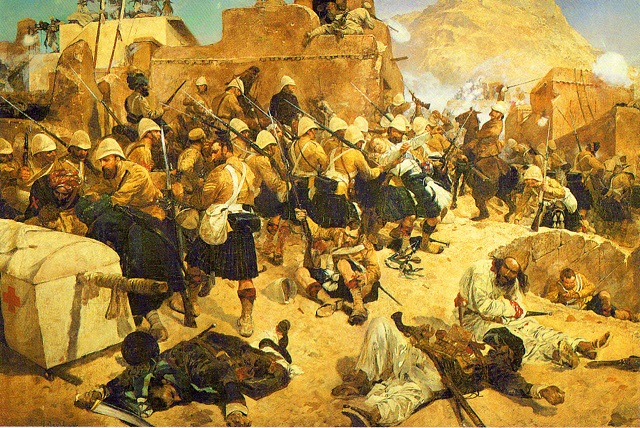
From a tabletop wargaming perspective, asymmetric warfare often gets short shrift, usually because it can be difficult to provide “balance” between the forces using traditional methods. If you look at older versions of ancients rules, the only way to balance (say) Roman Legions against Germanic barbarians is to give the barbarians a 3-to-1 numerical advantage, largely because on an individual basis the Roman units are so much better armed, armored, and trained. This leads to serious problems in trying to capture the conflicts of the period, because having a 3-to-1 numerical advantage was not how the Germanic tribes fought the Romans. Indeed, at the battle of Teutoburg Forest it is likely that the Germanic forces were nearer to numerical parity if not slightly outnumbered by the troops of Varus’ three Roman Legions and associated Auxilia.
As a more modern example, let’s look at the difference between the US Army in 1972 versus the Viet Cong. On an individual level, both combatants are similarly equipped (with both carrying automatic weapons), but the American soldier is arguably better protected (you can quibble about the protective value of helmets and flak jackets against small arms fire, but at the very least they offer some defense against concussive and shrapnel effects), is probably furnished with a larger loadout of ammunition and explosives, and has access to vastly superior logistics and transport capabilities. To represent this on a “point-for-point” basis, pitting a US military force against an “equivalent” Viet Cong force on the tabletop would result in massive numbers of VC troopers. But we know that that’s not what was happening in Southeast Asia in the early 1970s, and that in many instances it was the Viet Cong who were outnumbered at the point of contact. Many “modern” systems fall into a similar trap, with small detachments of “special forces operators” facing off against waves of insurgents. That’s not to say that these kinds of scenarios never occur, just that they may not be representative of the conflict in question.
Worse, simply relying on a points system and its resulting unrealistic numerical balance presents us with another false dichotomy, which is that once our armies are somehow balanced on an individual level that the resulting battle will unfold just as it would between two more evenly-matched opposing forces. But that too leads to battles that bear little resemblance to the real world. Clearly, simply relying on some vague notion of “points” does not seem to get us where we need to go to represent asymmetric warfare on the tabletop. So what should we be looking at instead? How can we capture the asymmetry between forces in a way which is both representative of the actual conflict and yet still “balanced” on the tabletop?
The key is to look beyond the individual troops themselves and take into account the wider context of the conflict. So let’s look at a couple of areas where people wanting to play asymmetric scenarios can focus their attention to try to bring more of the character of these kinds of conflicts to the tabletop, along with some example mechanisms from games that represent these ideas well in play.
Deployment
In the majority of cases of asymmetric warfare, the disadvantaged force is the indigenous one, meaning they are fighting in their own (or at least familiar) territory. This kind of “home field advantage” is a critical first step in representing asymmetry. The ability to appear from unexpected directions and/or without warning is one of the key hallmarks of these kinds of conflicts. If your rule set relies on fixed deployment zones, you’ll have a hard time representing the indigenous force’s knowledge of the local terrain and lines of transportation or communication. Further, if your rule set requires both forces to be deployed on the table at the start of the scenario, much of the uncertainty of these conflicts is lost.
If you’re looking for a game that handles this well, look no further than Infamy, Infamy by Too Fat Lardies. Designed from the ground up to model asymmetric skirmish conflicts between Roman forces and various barbarian groups (specifically Gauls, Brits, and Germans), Infamy, Infamy makes use of “deployment points” and “ambush points.” These are locations chosen by the barbarian player at the beginning of the game, representing terrain features from which that player’s forces may enter the table – and it’s important to note that it is purely up to the controlling player when and where forces appear. In a typical game, the Roman player may well be effectively surrounded by such points, presenting significant uncertainty as to where the enemy forces might appear. Worse, “ambush points” are locations from which the enemy may not only appear, but may appear and immediately launch a melee attack.
Complicating matters for the barbarian player is the idea of “high standing” or “low standing” terrain, which dictates how many units may ambush from that terrain feature. You might have a piece of terrain in the perfect place to attack or protect one of the objectives, but if it’s a marsh (low-standing terrain) rather than a forest (high-standing terrain), you might decide to place a deployment point there rather than an ambush point so as to get more troops on the field quickly.
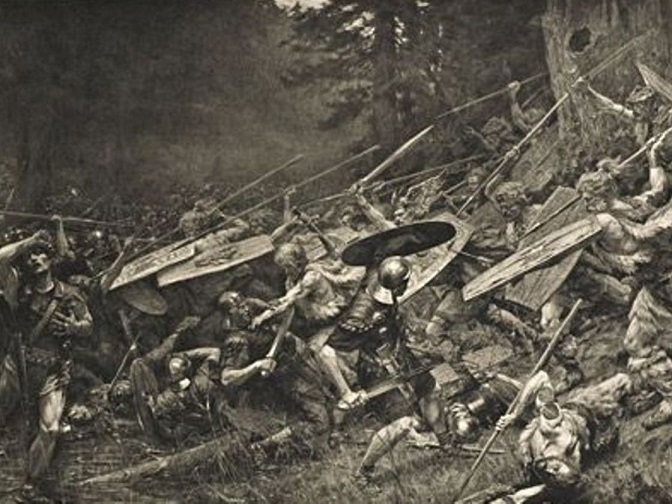
Honorable mention here also goes to Chain of Command, TFL’s excellent platoon-level WW2 ruleset. This game also uses variable “jump-off points” to deploy forces onto the table, and if you’re interested in playing an asymmetric scenario there are all sorts of shenanigans you can pull with the Patrol Phase mechanism to give one side or the other a deployment advantage (varying the number of Patrol Markers, how far they move, how many free moves they get up-front, etc). Anyone who has ever faced off against an early-war Japanese platoon using the “Ruse” support option (which allows for the arbitrary movement of a JOP after the Patrol Phase of the game has concluded) can attest to how much of a kick in the balls it can be to suddenly have your enemy appear from a very different location than you expected.
Chain of Command has another mechanism that is useful here as well, the Ambush. In the context of the ruleset, an ambush is a sudden deployment, attack, and removal from the table of a small unit. Enemy tank rolling your way? Why not spring an ambush with a couple of guys toting a satchel charge? The noteworthy effect of this rule is to limit the opponent’s capacity to interfere, as the ambushing unit always gets to fire first at the moment it deploys, and unless the enemy force has a unit on overwatch they don’t get to respond before the ambushing player removes the ambushing unit back to their undeployed reserves (potentially to launch another ambush at a later time or in a different location).
The key here is to give the insurgent force some kind of deployment advantage, ideally by providing significant uncertainty to the dominant force. These deployment differences or capabilities might be simply baked into the basic game (as they are for Infamy, Infamy), or they might require some resource expenditure on the part of the insurgent force (i.e. something that is represented in the “points cost” of the insurgent force).
But as asymmetric conflicts unfold, the dominant combatant will try to counterbalance the capabilities of the insurgent force. A good ruleset or scenario design will represent this, usually by allowing the dominant force to spend resources (which might also be represented by points) to mitigate the insurgents’ advantage. In Infamy, Infamy the Roman player may make a pregame attempt to “scout” the enemy’s deployment or ambush points, potentially converting ambush points to simple deployment points, or even removing them from the table all together! But this scouting can only be done by relatively expensive cavalry or specialized support troops (purchase of which requires the expenditure of resources when creating your force) and can be opposed by the barbarian player’s own cavalry. So you might lessen your opponent’s ability to ambush you, but at the cost of making your overall force smaller or more vulnerable in other areas. Whether it’s Numidian cavalry scouts checking out that quiet-looking village or Agent Orange defoliating a patch of jungle, providing costly counters for insurgent deployment should be a hallmark of any well-designed asymmetric system or scenario.
Movement
If insurgent forces’ knowledge of and familiarity with the terrain offers benefits for deployment, it stands to reason that these benefits should also extend to movement. Asymmetric conflicts often take place in extremely difficult terrain (mountains, dense forests, deserts, jungles, etc), and insurgent forces are often very lightly armed and equipped to take maximum advantage of mobility in these kinds of terrain. Usually, this lightness comes from being able to operate within a short distance of a friendly area of resupply, i.e. among the nearby civilian population. Contrast this with a dominant military force, which is generally operating far removed from a “safe” supply area and is forced to carry much more equipment as a result. There’s a marked difference in the mobility of a man carrying a rifle, a satchel with some full mags and a banh mi, and wearing sandals made out of retread tires, versus an American GI loaded down with 50-70 pounds of gear. Similarly, Mujahedin forces fighting the Soviets in Afghanistan in the 1980s made heavy use of mules (helpfully provided by the American CIA) to transport themselves and their gear through mountainous terrain. Unlike the Soviets (who mainly relied on trucks and armored personnel carriers), they were not limited to the roads.
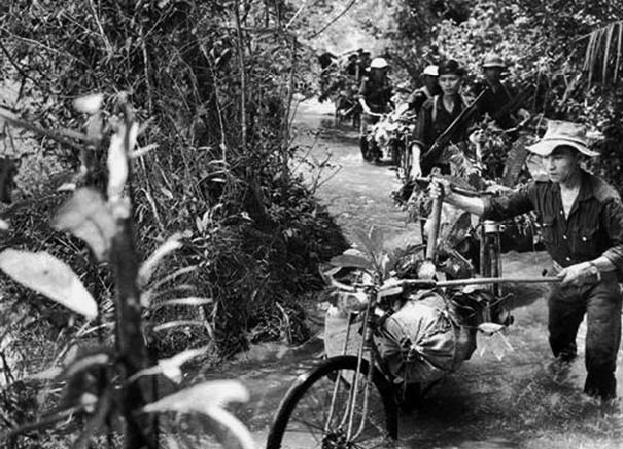
To represent this difference in loadout, insurgent forces should have a significant advantage in their ability to move around the tabletop. Even in open terrain, the lack of a heavy load can be a huge mobility advantage. In tight terrain, this difference should be night and day.
Further, it is worth noting that in many cases the terrain allows small, light forces to move largely unseen by the enemy. This can be hard to represent on the tabletop, but those rule systems which do allow for this often make use of “blinds” or some other marker that indicates the presence of a unit, but not what it is. This capability can be taken one step further by providing the insurgent player with some number of “dummy blinds,” which look to be a unit but are not. Bonus points if the dummy blinds aren’t limited to being stationary. This does require some sort of “spotting” mechanism that allows a force to positively identify the unit under the blind, and here simplicity is usually preferable to something that’s super complicated or has lots of modifiers, as you are explicitly adding another step to your game’s action sequence.
Finally, you can play all sorts of games with line-of-sight, combining the effects of movement with the uncertainties offered by insurgent deployment. That is, perhaps as soon as an insurgent unit breaks line of sight with the enemy, they may be removed from the table and re-deployed at a later time and/or in a different location.
The goal of all of these movement mechanics is to foster uncertainty and paranoia on the part of the dominant force. This is especially important in the earlier eras of warfare where a unit’s facing has a more marked effect on that unit’s capabilities in combat, especially if those rulesets give advantages to attacks from the flank or rear. If your Roman legionaries can be caught out by getting charged in the rear by a handful of screaming, woad-covered Celts, so much the better.
Here again the dominant military force is going to try to tilt the odds in their favor, so give some thought to potential counterbalances. Does the US force have drones on station to prevent enemy forces from breaking line of sight? If so, this should reflect an important allocation of resources and should have a commensurate opportunity cost for the dominant force’s player. Maybe you have the resources available for an APC or drones, but not both.
Command and Control
One area of special note in asymmetric warfare is that of command and control. This is an advantage/disadvantage that may be markedly different (in terms of who has the advantage) depending on the era. In earlier eras, the “home force” is likely to have an easier time coordinating the movement of troops at the tactical scale (because both sides are effectively using messengers to send orders out to their constituent units). But in later eras (i.e. once radio communication becomes a thing), it may actually be the dominant military force that has the advantage here. If your force lacks radio or cellular communications (or fears using them because they know the other side is listening in or using Radio Direction Finding in real-time for targeting of air strikes or artillery fire), it hampers your ability to tactically coordinate your disparate units.
A good way to reflect this is by making unit activation a resource rather than a guarantee. Many wargames just assume that on your turn all of your units will activate (though some, like Bolt Action, will randomize the order). But I find games where your unit activation resources are random and potentially limited or insufficient (e.g. Chain of Command) are far more interesting. These games present players with difficult and interesting choices to make, effectively forcing players to prioritize which parts of their initial battle plan (which as we all know will not survive first contact with the enemy) will get their focus and which will be sacrificed.
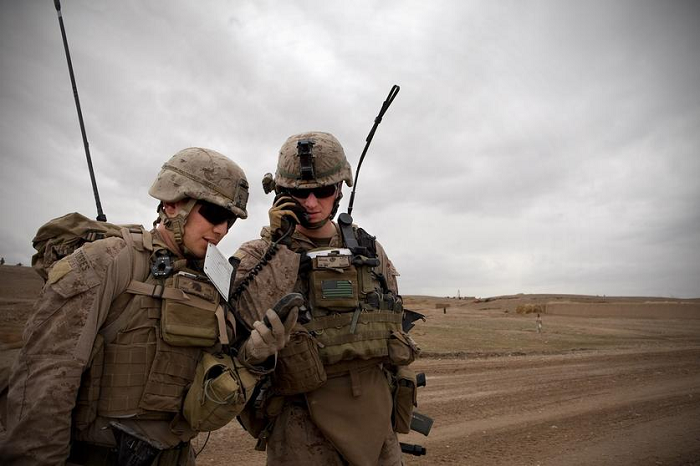
In the context of asymmetric warfare, give some thought to how each side fights and which side is going to be able to coordinate its troops in the field more easily. Give that side a corresponding advantage in its ability to activate units (or have them do what you want them to do when activated)
Morale
Asymmetric conflicts are notorious for short, sharp engagements, where the insurgent force attacks suddenly and without warning only to melt away before the enemy can respond. But from a tabletop gaming perspective, these engagements are boring to actually play. You’ll spend a bunch of time setting up your terrain and deploying your forces, only to have one side take a handful of turns and then retreat. By the time the dominant force gets into the action, that action is over. This might be characterful for the conflict, but as a game it sucks.
So how do we capture this aspect of asymmetric warfare without playing out a bunch of games that suck? Well, veterans of these kinds of conflicts often talk about the draining effect of trying to maintain constant vigilance in such an uncertain environment, and as a result a much better way to capture the cumulative effects of these short engagements may very well be to abstract them into a morale mechanic. Thus, the insurgent force can allocate some of its resources to a “constant attacks” capability which reduces the morale, resilience, or preparedness of the dominant force for those engagements which are not the hit-and-run-of-the-mill.
As always, consider ways the dominant force might counter this capability, and what it might cost them to do so. Every unit you have tasked with force-protection to safeguard against ambushes of your convoys is a unit that is not out scouting for insurgent hideouts.
Scenarios
The key to wargaming asymmetric conflicts is not to play out minor hit-and-run attacks (the cumulative effects of which are likely better handled in a morale mechanic as described above), but rather those engagements where for whatever reason the insurgent side decides that simply running away is not an option. Maybe the Redcoats have found the Iroquois village and are marching to attack it, or the Roman engineers need to be stopped from completing the bridge over the Seine, or T.E. Lawrence and his Arab allies absolutely need to take out the rail link with Damascus before Ottoman troops can reinforce the garrison in Medina. Whatever the scenario, the point is that this engagement should represent something different from the daily hit-and-run grind. The advantages and counterbalances described above should still apply, but it is important to structure the scenario objectives such that simply showing up and then running away isn’t a winning option for the insurgents.

If the disadvantaged force is attacking, then they have a clear objective, and most games handle this pretty well. If they are being attacked, however, then the best way to model the insurgent objective is time. It is a foregone conclusion that given sufficient time the dominant force will prevail, so the focus of the game shifts – how long can the insurgents hold out to buy time to escape? There are all sorts of rules mechanisms that can represent this – turn limits being the most obvious – but I find that any mechanism which uses a hint of randomness will usually give the game more tension. The Blitzkrieg 1940 sourcebook for Chain of Command has an excellent scenario in which the defending side is desperately trying to build up a special resource to end the game – with the complication that this is the same special resource that they’ll want to use to trigger unusual actions like an Ambush, and which the attacker can spend their own special resources (at a diminishing ratio) to reduce. These games always seem to come down to the wire, which is great.
Civilians
OK, fam, let’s remember one of our important rules for tabletop gaming, which is “do not gamify war crimes.” It is a truism of asymmetric warfare that often times the under-dog force is compelled to blend into the local civilian population – North Vietnamese General Vo Nguyen Giap openly admitted that the Viet Cong’s worst defeats were when they tried to go toe-to-toe with American forces, and that they were much more effective as irregulars that could disappear at will.
Thus, we get to one of the thorniest parts of asymmetric warfare, which is how we should handle civilians. While it is natural that each side’s relationships with the civilians must play a part, it’s important to avoid any kind of rule or scenario that explicitly rewards or incentivizes the targeting of civilians. Whether it’s insurgents callously using the civilian population as human shields or the dominant military force launching reprisal attacks, this kind of stuff doesn’t belong on the tabletop.
We get into a slightly more grey area when we talk about scenarios that target civilian infrastructure. Whether it’s Romans ransacking a Gallic village or the British “requisitioning” winter supplies from unsympathetic American colonists, these kinds of missions tread a fine line. Use them with caution.
With this admonition in mind, however, there are loads of ways in which the presence of civilians can be represented on the tabletop without becoming gross. War Banner Games’ skirmish ruleset “Gangs of Rome” incorporates this nicely, with “the mob” representing groups of civilians which move around the board. These mob markers can be used as deployment points, for units to appear or disappear as needed. While Gangs of Rome has a very particular conceit, this same idea could be extended to other eras or theaters. Just remember that once the shooting starts, civilians aren’t likely to hang around (something else that Gangs of Rome incorporates).
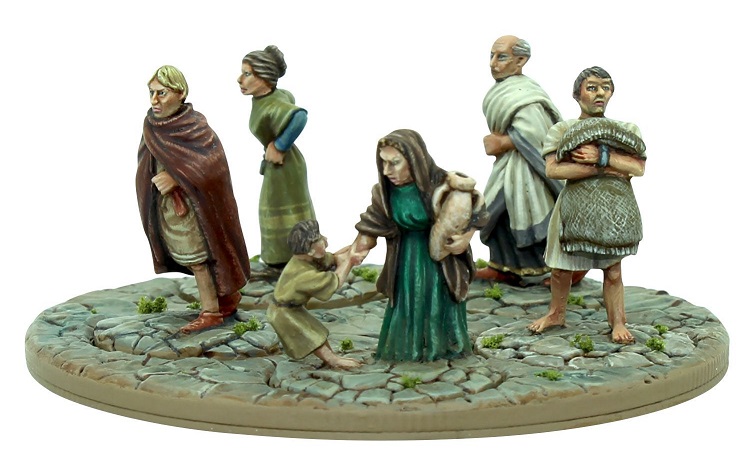
As long as we’re avoiding directly inflicting violence on civilians, each side having to manage their relations with the civilian population can make for interesting scenarios. Whether it’s negotiating with tribal elders for information, recruiting (or rooting out) spies, or attacking/protecting key civilian infrastructure as part of a “hearts and minds” campaign, both sides will need to tread lightly around the civilians.
Why? The answer to that is…
Politics
As noted 19th century Prussian military theorist Carl Philipp Gottfried von Clausewitz famously stated, “War is the continuation of politics by other means.” In virtually all cases, the goal of the under-dog force in any asymmetric conflict is to make it too costly for the dominant force to continue its aggression. To “bleed them dry.” To make it clear that the cost of victory is either unsustainable or just plain unreachable.
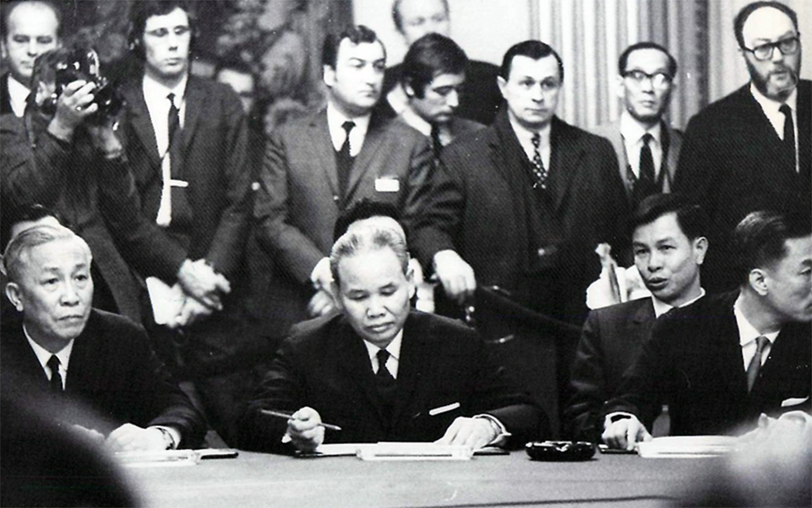
It is of note that one of the most common reasons insurgencies fail is by losing the support of the local populace. Once local support is lost, the guerilla force is going to find many of their advantages slipping away, leaving it increasingly difficult for them to challenge the larger or better-equipped military force.
Worse, in many cases the insurgent force has to deal with rampant factionalism. Whether it’s trying to tie together a bunch of disparate Sudanese tribes to resist the British or figuring out a way for fiercely independent and intensely paranoid French Resistance cells to work together, the politics of asymmetric warfare can be a minefield for both sides (if for different reasons).
Campaigns
And here’s where we tie it all together, as the political landscape should serve as the framework by which each force’s long-term objectives are measured. Campaigns are a great way to tie a bunch of disparate tabletop games together, to “forge a narrative” that is compelling and engaging for everyone involved. Good campaigns capture the asymmetries between forces in ways that a single scenario often can’t. You may have a campaign in which individual battles may see one side at a significant disadvantage, but where the campaign objectives balance out over the long haul. A great example of this is the excellent “Road to Bremen” pint-sized campaign for Chain of Command, released in TFL’s 2017 Christmas Special. In it, the Germans are likely to lose the majority of the engagements – but the campaign objective of the British isn’t victory but rather speed.
Depending on how sweeping or involved you want your campaign to be, there are loads of ways to reflect the capabilities and limitations of the forces in question. In a map-based campaign, you can reflect the influence or control of each side on a per-region basis – maybe the invaders have the capital city well in-hand, but consider the dense mountain jungles as “no-go” zones because the insurgents have all the advantages there. Thus the scenarios of the campaign are all about the dominant force increasing their degree of control and the insurgents chipping away at it.
Exit Strategy
While challenging to balance evenly, asymmetric conflicts (be they single scenarios or longer campaigns) can make for some really compelling games on the tabletop. Hopefully we’ve given you some ideas you can apply to your own games, be they historical representations of real-world conflicts, or perhaps the desperate plight of an Astra Militarum force holding out against a full-scale Tyranid invasion. Don’t be afraid to try some of these ideas out!
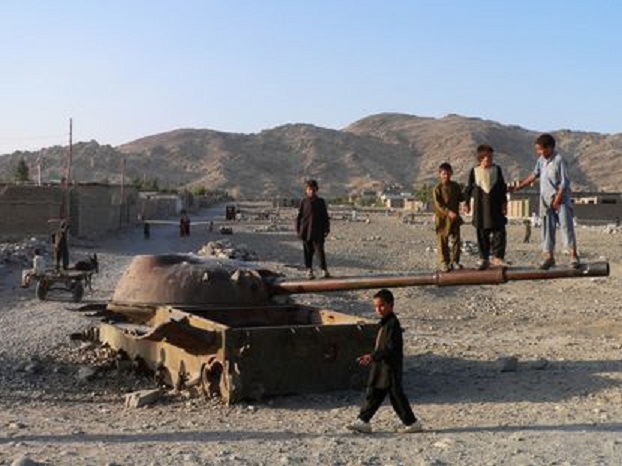
Have any questions or feedback? Drop us a note in the comments below or email us at contact@goonhammer.com.


